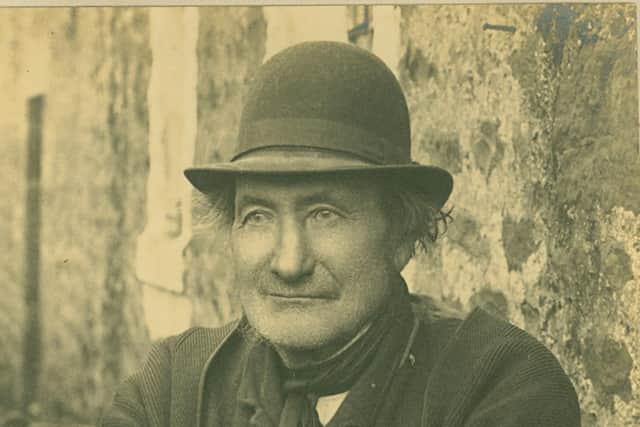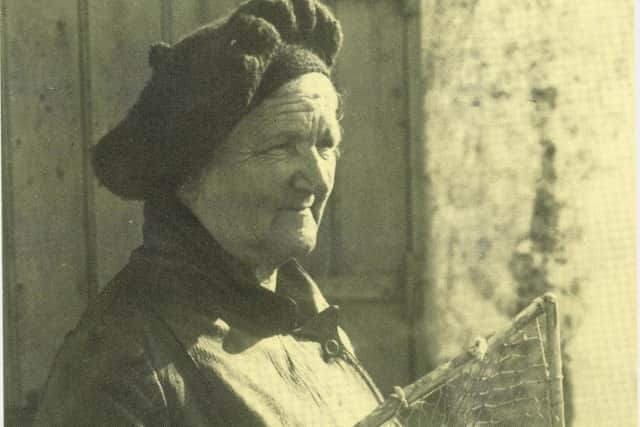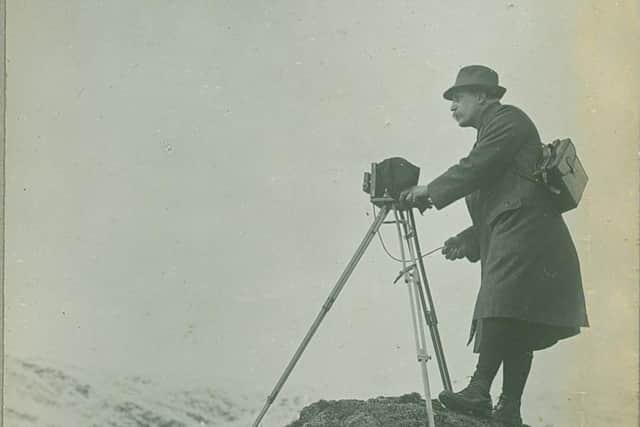How Sam’s photographs captured a bygone era in Lancaster
and live on Freeview channel 276
Sam Thompson was a photographer whose images of mainly now long-gone Lancaster streets, yards and alleyways give a fascinating glimpse into the city’s past.
His many portraits of ‘local worthies’ and ordinary working class folk capture bygone times, too.
Advertisement
Hide AdAdvertisement
Hide AdAnd his photographs were of such a high standard that some are in the Royal Photographic Society collection at the Victoria & Albert Museum in London and were exhibited in America and Canada.


Sam was born into a farming family in 1870 though his exact birthplace is not known. At the time, his parents were living at Wallers Farm in what is now Newsham Road in Bowerham though his mother may well have given birth at her parent’s home just off Hala Road where his grandfather was the blacksmith. The family later moved to Newsham House in Barton Road, and the barn opposite their home, which is now a community centre, is currently the focus of the Heritage Lottery funded Cow Shed To Community project. Scotforth and his farming roots were rich pickings for Sam who could often be seen rambling or cycling around the area with his camera in the basket and a tripod attached to the bike frame.
In fact one of the photographs featured here is said to be of the Mayor of Scotforth, James Procter who held the post for more than 20 years. Apparently, one of his other achievements was washing 404 sheep in four hours!
Gamekeepers, gardeners, fishermen and lighthouse keepers, including Janet Raby – pictured here – were among the characters he captured, though Sam’s probably best-known locally for the photographs of threatened streets, yards and alleys taken during the 1920s which are now an invaluable record of Lancaster in that era.
Advertisement
Hide AdAdvertisement
Hide AdMost of his collection can be viewed online thanks to Lancashire County Council Libraries, Museums, Culture and Archives at https://redrosecollections.lancashire.gov.uk/ and many of his images are also at Lancaster City Museum. We are grateful to both organisations for their help in compiling this feature.


Apart from a short spell as an office worker in Preston, Sam spent all his life in Lancaster. Towards the end of the 19th Century, he began working as a photographer with the Rembrandt Intaglio Printing Company which had been established by Karl Klic, a Czech, and a Lancastrian, Samuel Fawcett. They specialised in printing reproductions of the old masters by the new Rotary Photogravure process which they had invented jointly.
He later took over the etching from Mr Fawcett and was chief etcher until the firm transferred its headquarters to London in 1926, though Sam remained in Lancaster.
During the 1930s, Sam’s photography won awards in many important exhibitions in this country and his pictures were also exhibited in America and Canada when some of them were included in a selection of ‘the best of British’ put together by the Royal Photographic Society.
Advertisement
Hide AdAdvertisement
Hide AdSame also showed his work during O’er Hill and Dale lantern lectures where he provided the photographs for the lantern slides and his friend, relation and walking companion, James Rowe, did the talking.


James often appeared in Sam’s photographs, smartly dressed carrying a little case which had Sam’s glass plates safely inside.
During later life, one of Sam’s other great pleasures was gardening and the garden at West Bank in Scotforth Road, a house which the Thompsons had built, was said to be impeccable.
On his friend’s death on March 15, 1945, James said: “He craved no pleasures beyond the simplest - a country walk or cycle ride with his camera; the flower beds in the park; the views from the top of Clougha or Wardstone; a talk with the farmers and gamekeepers; cultivating his garden and a good book; all these were pure joy.”
Advertisement
Hide AdAdvertisement
Hide AdSam never married nor had children and the only members of his family still living in this area are his great great niece and great great nephew but his legacy is in the photographs of the people and places that he captured so beautifully.
l For more information about the Cow Shed To Community project, visit www.bartonroadcentre.co.uk.